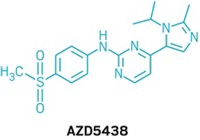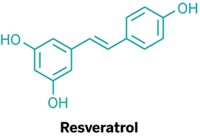Advertisement
Grab your lab coat. Let's get started
Welcome!
Welcome!
Create an account below to get 6 C&EN articles per month, receive newsletters and more - all free.
It seems this is your first time logging in online. Please enter the following information to continue.
As an ACS member you automatically get access to this site. All we need is few more details to create your reading experience.
Not you? Sign in with a different account.
Not you? Sign in with a different account.
ERROR 1
ERROR 1
ERROR 2
ERROR 2
ERROR 2
ERROR 2
ERROR 2
Password and Confirm password must match.
If you have an ACS member number, please enter it here so we can link this account to your membership. (optional)
ERROR 2
ACS values your privacy. By submitting your information, you are gaining access to C&EN and subscribing to our weekly newsletter. We use the information you provide to make your reading experience better, and we will never sell your data to third party members.
Pharmaceuticals
Asthma Drug Slims Fat Mice
Kinase inhibitor reduces inflammation associated with type 2 diabetes, obesity
by Elizabeth K. Wilson
February 18, 2013
| A version of this story appeared in
Volume 91, Issue 7
Amlexanox, a drug long used to treat asthma and mouth sores in humans, may also be a promising treatment for type 2 diabetes and obesity, a new mouse study shows (Nat. Med., DOI: 10.1038/nm.3082). Because the drug is already FDA approved and has a high safety profile, it could be tested for this new human use relatively easily, say the study’s authors, Alan R. Saltiel at the University of Michigan and colleagues. The group showed that in mice, amlexanox inhibits the kinases IKK-ε and TBK1, which are produced in the liver and fat in response to chronic inflammation caused by a high-fat diet. Though the mechanism of inflammation remains mysterious, researchers have amassed considerable evidence that the condition is associated with insulin resistance, type 2 diabetes, and obesity. Saltiel’s group screened a library of 150,000 small molecules for promising IKK-ε inhibitors and discovered that amlexanox fit the bill. They found that mice on a high-fat diet that are treated from the start with amlexanox did not become obese, while their untreated counterparts did. When already obese mice were treated with the drug, the mice returned to normal weight and their insulin resistivity and fatty liver disease declined.




Join the conversation
Contact the reporter
Submit a Letter to the Editor for publication
Engage with us on Twitter